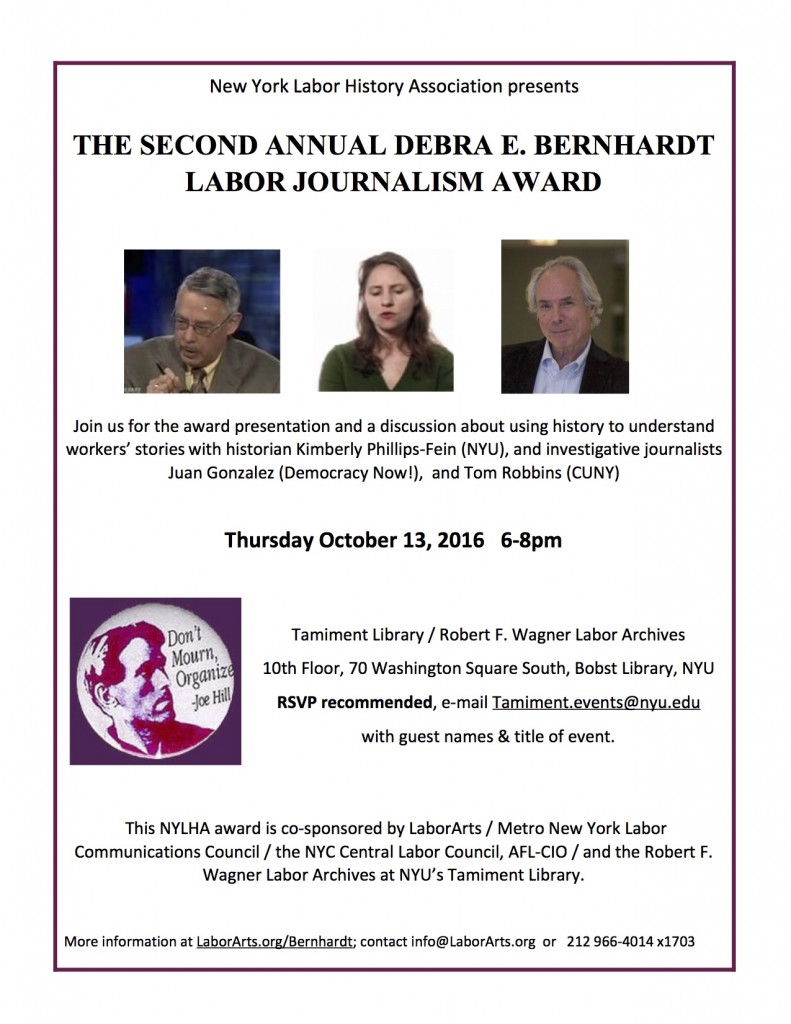The New York Labor History Association is pleased to announce this Call for Entries for the Second Annual Debra E. Bernhardt Labor Journalism Prize. The deadline for entries is Thursday September 1, 2016.
The Bernhardt Prize is an award of $500 given to an article or series of articles that furthers the understanding of the history of working people. Articles focused on historical events AND articles about current issues (work, housing, organizing, health, education, and also workers’ organizations and unions) that include historical context are both welcome. The work should be published – in print or online – in a union or workers’ center publication or by an independent/free-lance journalist. By sponsoring this award we hope to inspire more great writing for a general audience about the history of work, workers, and their organizations. The award is co-sponsored by LaborArts; Metro New York Labor Communications Council; the NYC Central Labor Council, AFL-CIO; and the Robert F. Wagner Labor Archives at NYU’s Tamiment Library.
The winner will be announced at the Tamiment Library on Thursday October 13, 2016, during a forum about the history of labor journalism. We are guided by the vision of the late Debra E. Bernhardt, who worked in so many different realms to share the hidden histories of working people. As head of the Wagner Labor Archives she reached out to an astonishing number of people and organizations, to document undocumented stories and unrecognized contributions, and to make links between past and present.
The prize will be given to insightful work that contributes to the understanding of labor history; shows creativity; demonstrates excellence in writing; and adheres to the highest journalistic standards of accuracy. The work may be an article or a series of articles, published in a labor or a workers’ center publication or by an independent journalist – in print or online – between September 1, 2015 and August 30, 2016.
TO ENTER send an e-mail before Thursday September 1, 2016 to info@laborarts.org with the following information:
Author name
title of article
name of publication
url link to publication if available
date and place of publication
url link for article if available.
IF the entry originally appeared in print, send the above mentioned e-mail and also mail six print copies of the article (with a cover sheet) to Labor Arts, 7th Floor, 25 Broadway, New York, NY 10004. The work should be published between September 1, 2015 and August 30, 2016. Only one entry per person; publications and subject matter should target the United States and Canada; neither books nor plays are eligible. If you have any questions about the prize please email info@LaborArts.org or call 212-966-4014 ext. 1703.

